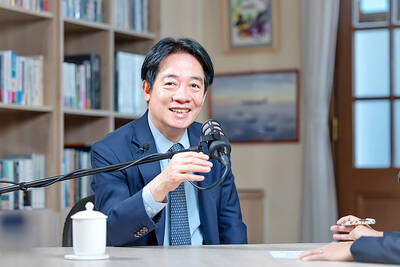Meet your farmer. The maker of Stone-Buhr flour, a popular brand in the western US, is encouraging its customers to reconnect with their lost agrarian past, from the comfort of their computer screens. Its Find the Farmer Web site and special labels on its packages let buyers learn about and even contact the farmers who produced the wheat that went into their bag of flour.
The underlying idea, broadly called traceability, is in fashion in many food circles these days. Makers of bananas, chocolates and other foods are also using the Internet to create relationships between consumers and farmers, mimicking the once-close ties that were broken long ago by industrialized food manufacturing.
Traceability can be good for more than just soothing the culinary consciences of foodies. The US Congress is also studying the possibility of some kind of traceability measure as a way to minimize the impact of food scares like the recent peanut salmonella outbreak. The theory: If food producers know they’re being watched, they’ll be more careful. The Stone-Buhr flour company, a 100-year-old brand based in San Francisco, is giving the buy-local food movement its latest upgrade. Beginning this month, customers who buy its all-purpose whole wheat flour in some Wal-Mart, Safeway and other grocery chains can go to findthefarmer.com, enter the lot code printed on the side of the bag, visit with the company’s farmers and even ask them questions.

PHOTO: NY TIMES NEWS SERVICE
“The person who puts that scone in their mouth can now say: ‘Oh my God, there’s a real person behind this,’” said Read Smith, 61, who runs Cherry Creek Ranch, a 4,047-hectare farm and cattle ranch in Eastern Washington. “They are going to bite into that bread or pastry and know whose hands were on the product.”
The Find the Farmer site is the brainchild of Josh Dorf, 39, a disaffected dot-com entrepreneur who got into the food business six years ago by buying the Stone-Buhr brand from Unilever, the multinational consumer brands company.
Dorf gathers wheat from 32 farmers in the Pacific Northwest whose methods have been certified by an environmental organization. That wheat is kept segregated from uncertified farmers’ wheat while it is milled at a Spokane, Washington, factory, even though a single flour sack could contain wheat from as many as four farmers.

PHOTO: NY TIMES NEWS SERVICE
“Is it gimmicky? Sure, but it has value,” Dorf said. “Consumers have an interest in dealing directly with and supporting the American farmer.”
Dorf said he was inspired to create the site by The Omnivore’s Dilemma, a book about the damaging effects of a hyper-industrialized food system.
The author of that bestseller, Michael Pollan, a professor at the University of California, Berkeley, said Find the Farmer was one part of a bigger effort to reintroduce trust into the food system.
“If the peanut processing company that was the source of the recent salmonella outbreak had live Web cams in the production facility, would it have allowed things to get so filthy?” Pollan asked. “The more transparent a food chain is, the more accountable it is.”
Some in Congress agree and have proposed a traceability measure as part of the proposed FDA Globalization Act of 2009, which would give the Food and Drug Administration and the Department of Agriculture the authority to require food makers to trace individual products back to the farms that produced them if necessary.
Representative Diana DeGette, a vocal advocate for the provision, said food makers initially resisted the concept but also wanted to avoid more expensive national recalls, which can occur when the specific source of an outbreak is not known.
“What many food producers are now realizing is the cost of upgrading to a traceability system is far less than the financial losses than they have to take if there is some kind of a recall,” said DeGette, a Colorado Democrat.
Dorf said the separate manufacturing process adds only a “marginal cost” to each bag, which is priced around US$3, similar to other brands of flour.
Several food companies in the US and Europe are also experimenting with using the Internet to connect customers with the growers. Buyers of Dole organic bananas in the US can now enter a bar code number on the banana’s sticker on the Doleorganic.com Web site and see photos and details about farms in Central and South America.
The company says it plans to expand the effort this year in Europe with a variety of other fruits.
Askinosie Chocolate, a specialty chocolate maker in Springfield, Missouri, also encourages its customers to enter codes on its Web site and pay a virtual visit to its cocoa bean farms in Mexico, Ecuador and the Philippines — and even read diary entries from farmers.
Supermarkets in the UK jumped on the traceability wagon early. The Waitrose supermarket chain lets buyers see information and videos on the farmers of potatoes, sugarloaf pineapples, papayas and coconuts. Customers at Tesco, one of Europe’s largest retailers, can trace the source of products like watercress.
The wheat farmers, for their part, appear to be enjoying meeting people at the other end of the food chain.
Fred Fleming is a “face behind your flour” on a Web site created by Stone-Buhr flour.
“We never knew where our wheat went to. The story always ended at the grain bin and the big commodity operations,” said Fleming, 59, who operates Lazy YJ Farms in Reardan, Washington., which is part of Find the Farmer.
“Now we can actually have a conversation with our city customers,” he said. “We can get back to the old days.”

Nvidia Corp yesterday unveiled its new high-speed interconnect technology, NVLink Fusion, with Taiwanese application-specific IC (ASIC) designers Alchip Technologies Ltd (世芯) and MediaTek Inc (聯發科) among the first to adopt the technology to help build semi-custom artificial intelligence (AI) infrastructure for hyperscalers. Nvidia has opened its technology to outside users, as hyperscalers and cloud service providers are building their own cost-effective AI chips, or accelerators, used in AI servers by leveraging ASIC firms’ designing capabilities to reduce their dependence on Nvidia. Previously, NVLink technology was only available for Nvidia’s own AI platform. “NVLink Fusion opens Nvidia’s AI platform and rich ecosystem for

‘WORLD’S LOSS’: Taiwan’s exclusion robs the world of the benefits it could get from one of the foremost practitioners of disease prevention and public health, Minister Chiu said Taiwan should be allowed to join the World Health Assembly (WHA) as an irreplaceable contributor to global health and disease prevention efforts, Minister of Foreign Affairs Lin Chia-lung (林佳龍) said yesterday. He made the comment at a news conference in Taipei, hours before a Taiwanese delegation was to depart for Geneva, Switzerland, seeking to meet with foreign representatives for a bilateral meeting on the sidelines of the WHA, the WHO’s annual decisionmaking meeting, which would be held from Monday next week to May 27. As of yesterday, Taiwan had yet to receive an invitation. Taiwan has much to offer to the international community’s

CAUSE AND EFFECT: China’s policies prompted the US to increase its presence in the Indo-Pacific, and Beijing should consider if this outcome is in its best interests, Lai said China has been escalating its military and political pressure on Taiwan for many years, but should reflect on this strategy and think about what is really in its best interest, President William Lai (賴清德) said. Lai made the remark in a YouTube interview with Mindi World News that was broadcast on Saturday, ahead of the first anniversary of his presidential inauguration tomorrow. The US has clearly stated that China is its biggest challenge and threat, with US President Donald Trump and US Secretary of Defense Pete Hegseth repeatedly saying that the US should increase its forces in the Indo-Pacific region

ALL TOGETHER: Only by including Taiwan can the WHA fully exemplify its commitment to ‘One World for Health,’ the representative offices of eight nations in Taiwan said The representative offices in Taiwan of eight nations yesterday issued a joint statement reiterating their support for Taiwan’s meaningful engagement with the WHO and for Taipei’s participation as an observer at the World Health Assembly (WHA). The joint statement came as Taiwan has not received an invitation to this year’s WHA, which started yesterday and runs until Tuesday next week. This year’s meeting of the decisionmaking body of the WHO in Geneva, Switzerland, would be the ninth consecutive year Taiwan has been excluded. The eight offices, which reaffirmed their support for Taiwan, are the British Office Taipei, the Australian Office Taipei, the